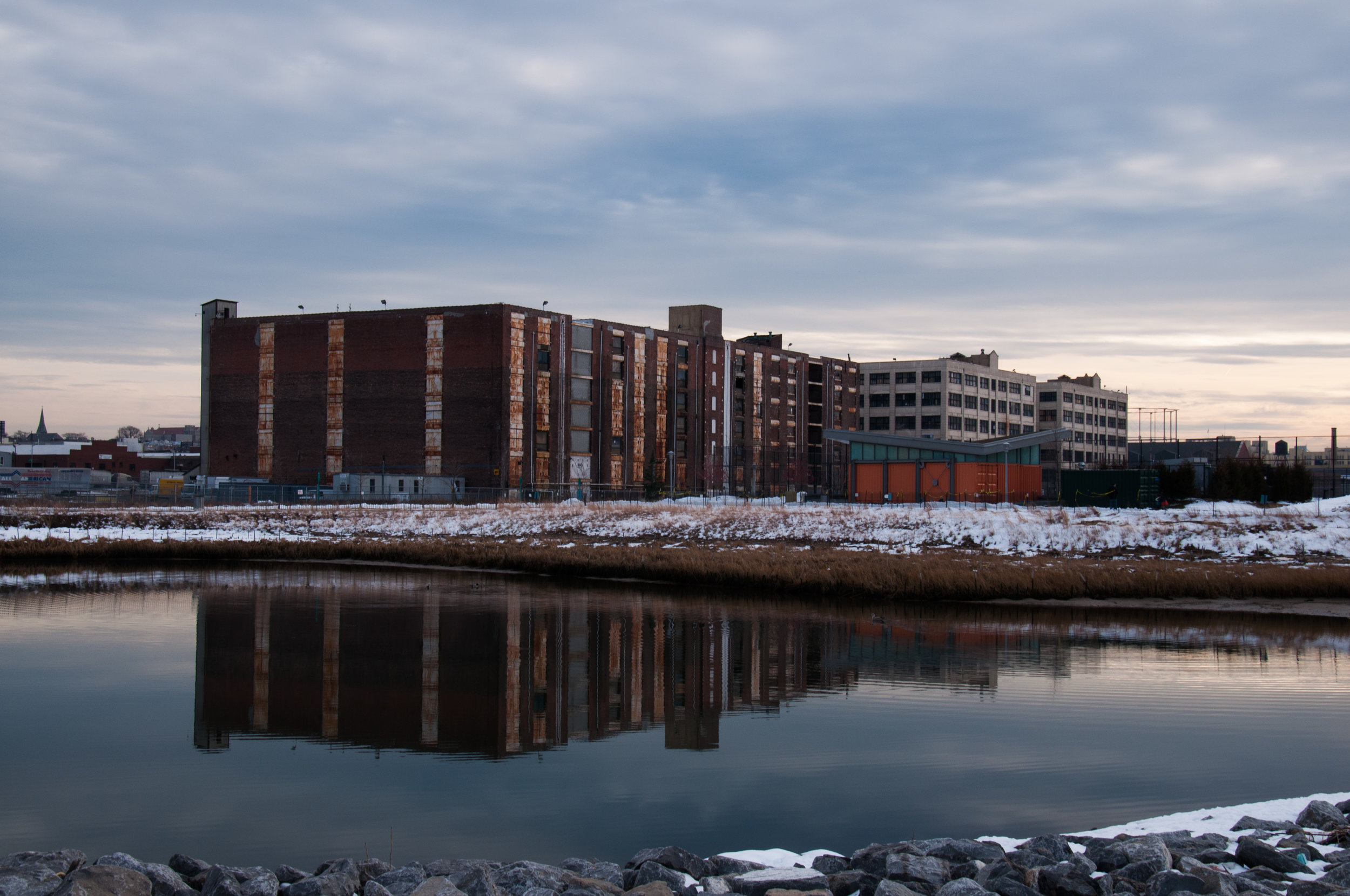Biology|Architecture|Habitat
We are—all of us—endowed with a story worth telling. Recantation of one’s tale has the ability to transport her audience to exotic locales, to illustrate personal journeys, and to recall a time that has past. However obscure its intent may be, the act of relaying one’s tale is unique to the time and place where it is told; because storytelling is an exchange of knowledge and a way to look at what was and how to shape meaning to what may be. On the shores of New York City’s industrial waterfronts, a similar palimpsestic narrative exists. However, after years of abandonment, and in the face of predicted aqueous destruction, the story of these areas is likely to be submerged by tidal events and storm surges. Yet, if these areas could evolve to become a part of their natural habitat instead of only mimicking the resilient strategies of one, the potential to attenuate destructive aqueous events is increased. To this a methodology of urban anthropogenic analysis and techniques of systems biology and evolutionary ecology must be applied to architectural design.
The Federal Emergency Management Agency (FEMA) 2050 100-year projected floodplain map for New York City indicates the areas of the city that have a 1% chance of flooding within any year projected up to 2050.[i] When coupled with the anticipated +31” sea level rise[ii], this could mean as much as two-thirds (346 miles) of the 520 miles New York City coastline alone could be underwater within the next 30 years. These statistics make the idea of reactivating the city’s neglected industrial waterfronts sound like a tragic story waiting to unfold. However, these projections can be mitigated through biobased design methodology, as it utilizes the inherent resiliency of living organisms and habitats to reduce the extent of flooding over time.
Architecture has a rich history of utilizing biomimetic design to solve issues of resiliency against the forces of nature. There have been examples since the Neolithic period, with a notable apex during the Arts & Crafts and Art Nouveau movements of the mid and late nineteenth century. While the biomimetic typology is an essential form of design in the greater canon of architectural history, it is my belief that as these designs exists as homage to nature rather than as a member of it.
The advancements in science and technology over the past hundred years have been significant in changing the course of our daily lives. In particular, developments in biology, biochemistry, and biotechnology have increased one’s understanding of who she is, where she came from, and how—genetically—she is linked to the world at large. The discoveries of these types of linkages have also elucidated the influential role that abiotic materials play in the function and development of all life. Therefore, for architecture to advance in the same manner as the world around it, it must apply these scientific principles to serve as an abiotic ark that can sustain and holistically reside with these forces of nature and local cultures.
In order to design for a location situated at the precipice of a great coastal metamorphosis, three foundational roots must be planted and applied to all aspects of design:
- Resilient architecture cannot prevent but must attenuate tidal and storm surge by fostering the growth of natural habitats. Therefore, the role of the architect is that of a conductor of a symphony of decay. She must define the space in between land and sea by filtering and enhancing the beneficial scalar relationships found in liminal habitats specific to the region.
- A diverse catalogue of knowledge—in the form of site and historical analysis, area use mapping, and informal socio-anthropological interviews and documentation—must be applied to a multifaceted solution that not only designs to benefit the future, but to improve the quality of life in the present.
- To prevent a strictly biomimetically-designed approach, the massing and materiality of the architectural space must adhere to the scientific and mathematical principles of the hyperbolic plane, which govern the processes and geometries of generative biological design.
Historically, the development of the city’s waterfronts evolved to suit the needs of a populous at specific points in time. The Bush Terminal Industrial Complex in Sunset Park, Brooklyn, for example, served as the liminal space between the city’s commercial and manufacturing arteries and the world from the 1890s through the mid-twentieth century. As Nina Rappaport illustrates in Vertical Urban Factory, “conceived as an intermodal transportation, warehousing, and manufacturing facility, by Irving T. Bush, the mammoth waterfront complex challenged Manhattan’s manufacturing primacy, as Bush convinced railroad officials to establish direct route to his Brooklyn piers.”[iii] Bush’s plans went so far as furthering the development of Sunset Park. In addition to providing economic capital to the local immigrant population, he also provided housing. The vestiges of which can be seen in the mosaicked zoning layout of the area that exists to this day. Recent growth in population has spawned a renaissance in development of the Sunset Park neighborhood. These revitalization efforts, however, have been solely focused on housing, manufacturing, small businesses, and the renovation of Sunset Park. While needed, this type of development only invests in the basic needs of the community, and neglects issues of psychological and self-fulfillment needs, which foster one’s position in society and relationship to environment. With one of the city’s largest ethnically diverse populations, Sunset Park lacks areas where culture and traditions, both at the level of self and the community can be expressed and exchanged.
BioArcHabitat seeks to create a new chapter in Bush Terminal’s history by utilizing the non-Euclidean generative geometry of the hyperbolic plane to create a series of fecund spaces that enhance conditions of both aqueous and terrestrial environments. The forms of hyperbolic geometry are endemic in everything from the structure of proteins to Einstein’s General Theory of Relativity and Curved Hyperspace[iv]. This geometry is also present in the formation of coral reefs, whose large living architecture of calcium carbonate laid down by living organisms over thousands of years are home to the most productive of all ecosystems[v].
The BioArcHabitat Reef is a palimpsestic continuation of various urban reef designs. Composed of plant and algae laden bioplastic that spans from the Bay Ridge Flats, through Bush Terminal Park, and into the masonry of the building itself, this reef grows in strength with time. The subtidal reef utilizes principles of wave interference, and its hyperbolic formation is tangentially aligned to the tidal currents and projected 100-year floodplain. As the tide ebbs and flows, water passes through the reef where it is filtered by its aqueous flora and fauna. With every period of spiraling modulation of the reef, a decrease in mechanical wave action occurs. The metabolic activities of the reef habitat increase destructive wave interference within the water before it reaches the shore.
Similarly, the terrestrial portion of BioArcHabitat, the community cultural space, is designed with future coastal conditions in mind. Made of the same materials as the aqueous reef in masonry form, all active programs of the structures are located 16-feet above the ground plane to accommodate yearly tidal and storm surge flooding. As the building grows over time, the habitat it fosters attenuates aqueous surge, filters, and remediates water as it is returned to the water cycle. Overall, the changing spatial experience of the building over time increases environmental awareness of the user.
Like the shores of BioArcHabitat, the story of architecture has also entered a period of transition. With more awareness of the interconnectivity and similarity of concepts and processes, the definition of architecture must evolve from that of design and construction of spaces to that of the art of systems design. Moreover, the strength of BioArcHabitat is that it recognizes that these systems—from the cellular unit of algae to the complex cultural dynamics of a population—are interwoven, interdependent, and influential in the development of the fabric of space. The resiliency of this weave is derived from each component’s unique characteristics; yet, it recognizes that its form is finite, and it must continually prepare itself for change of use and shape. Like the protagonist, Cosimo Piovasco di Rondò, in Italo Calvino’s The Baron in the Trees (1957) [vi], the architect must distance herself just enough to see the complexity of all and create an algorithm that is generative and altruistic towards future conditions.
[i] Caitlyn Kennedy, “Future Flood Zones for New York City” NOAA Climate.gov, https://www.climate.gov/news-features/featured-images/future-flood-zones-new-york-city, 18 March 2014.
[ii] Justin Gillis, “Climate Model Predicts West Antartic Ice Sheet Could Melt Rapidly,” The New York Times (New York, NY), 30 March 2016, accessed 5 October 2016, https://nyti.ms/2kqLVdI.
[iii] Nina Rappaport, Vertical Urban Factory (New York: Actar D Inc., 2015), 310.
[iv] Joel Castellanos, Joe Dan Austin, and Ervan Darnell, “NonEuclid: Interactive Javascript Software for Creating Straightedge and Collapsible Compass Constructions in the Poincaré Disk Model of Hyperbolic Geometry” University of New Mexico, 1994, accessed 2 January 2017, http://cs.unm.edu/~joel/NonEuclid/.
[v] Cleveland P. Hickman Jr., Larry S. Roberts, Susan L. Keen, Allan Larson, and David J. Eisenhour, Animal Diversity, 5th Edition, (Boston: McGraw Hill, 2009) 139-141.
[vi] Italo Calvino, The Baron in the Trees, trans. Archibald Colquhoun (New York: Hartcourt, Inc., 1959).














































































